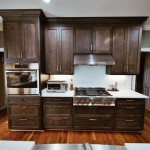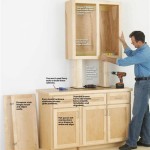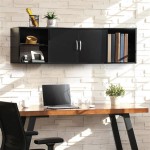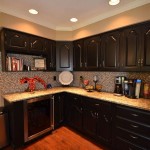How To Build Your Own Kitchen Base Cabinets
Embarking on a kitchen renovation can be an exciting endeavor, but the cost associated with new cabinets can quickly deter even the most enthusiastic DIYer. Fortunately, building your own kitchen base cabinets offers a fantastic way to save money and customize the space to your exact specifications. While it involves a degree of skill and effort, the satisfaction of creating custom cabinetry for your kitchen is immeasurable. Here's a comprehensive guide to help you build your own kitchen base cabinets, covering the essential steps from planning to finishing.
1. Planning and Design
Success in any DIY project starts with meticulous planning. Before purchasing any materials, carefully consider your kitchen layout, desired cabinet configurations, and storage needs. This initial step involves creating a detailed plan outlining the size, dimensions, and number of cabinets required. You can sketch your design by hand or utilize specialized kitchen design software to generate professional-looking floor plans and elevations.
When designing your cabinets, consider the following factors:
- Cabinet dimensions: Standard kitchen cabinet depths range from 24" to 27", with heights typically around 34.5". Adjust these dimensions based on your personal requirements and available space.
- Door and drawer configurations: Decide on the optimal arrangement of doors and drawers for each cabinet. Factors like frequently used items and storage needs should influence these choices.
- Cabinet fronts: Choose between standard flat-panel fronts, raised-panel fronts, or shaker-style fronts. This decision impacts the overall aesthetic of your kitchen.
- Work surfaces: Consider the countertop material you plan to use, as it will influence the height of your cabinets.
Once your plan is finalized, create a detailed list of all the materials needed, including wood, screws, hinges, drawer slides, and finishing materials.
2. Cutting and Assembly
The process of building base cabinets begins with meticulous cutting of the wood to the precise dimensions outlined in your plan. Using a table saw, chop saw, or circular saw, ensure the cuts are clean and accurate. For added stability, always use plywood or MDF for cabinet boxes, as these materials are less prone to warping.
With the wood pieces cut, assemble the cabinet boxes using wood glue and screws. Here's a typical assembly process:
- Sides and bottom panel: Start by attaching the side panels to the bottom panel using glue and screws. Make sure the sides are flush with the bottom and parallel to each other.
- Top panel: Attach the top panel to the sides using glue and screws. Ensure the top panel is flush with the sides and parallel to the bottom panel.
- Back panel: Cut a piece of plywood or MDF for the back panel and attach it to the assembled box using glue and finishing nails or staples. The back panel should be flush with the top and bottom panels.
- Cabinet face frame: Once the box is assembled, add a face frame to the front using wood glue and screws. The face frame provides structural support and a finished look.
Repeat this process for each cabinet in your plan, ensuring accurate measurements and consistent assembly for a cohesive and professional finish.
3. Installation and Finishing
Before installing your cabinets, consider the level of your kitchen floor to ensure the cabinets are positioned evenly. To install the cabinets, use shims and levelers to achieve a level and stable base. Secure the cabinets to the walls using screws or brackets for added stability, especially in areas with heavy loads.
Once the cabinets are installed, it's time to add the final touches. Install hinges for the doors and slides for drawers. When choosing hinges, consider the type of doors you're using, as there are various options available, including self-closing hinges and soft-close hinges.
To complete the cabinets, apply a finish, such as paint, stain, or polyurethane, to enhance their appearance and protect the wood from moisture and wear. Ensure the finish is applied evenly and that all surfaces are covered for a consistent look.
Building your own kitchen base cabinets requires dedication and precise work, but the reward of a custom-designed and cost-effective kitchen is well worth the effort. With careful planning, accurate cutting, and meticulous assembly, you can create beautiful and functional kitchen cabinets that perfectly suit your needs and style.

Kitchen Base Cabinets 101 Ana White

How To Build Base Cabinets The Complete Guide Houseful Of Handmade

How To Build Base Cabinets The Complete Guide Houseful Of Handmade

How To Build Base Cabinets The Complete Guide Houseful Of Handmade

How To Build Cabinets The Complete Guide Houseful Of Handmade

Kitchen Base Cabinets 101 Ana White

Building Kitchen Base Cabinet Carcass With Super Easy Drawer Method

How To Build A Diy Kitchen Island House By The Bay Design

How To Build A Kitchen Base Cabinet Turmericmecrazy

How To Build A Diy Kitchen Island House By The Bay Design
Related Posts








